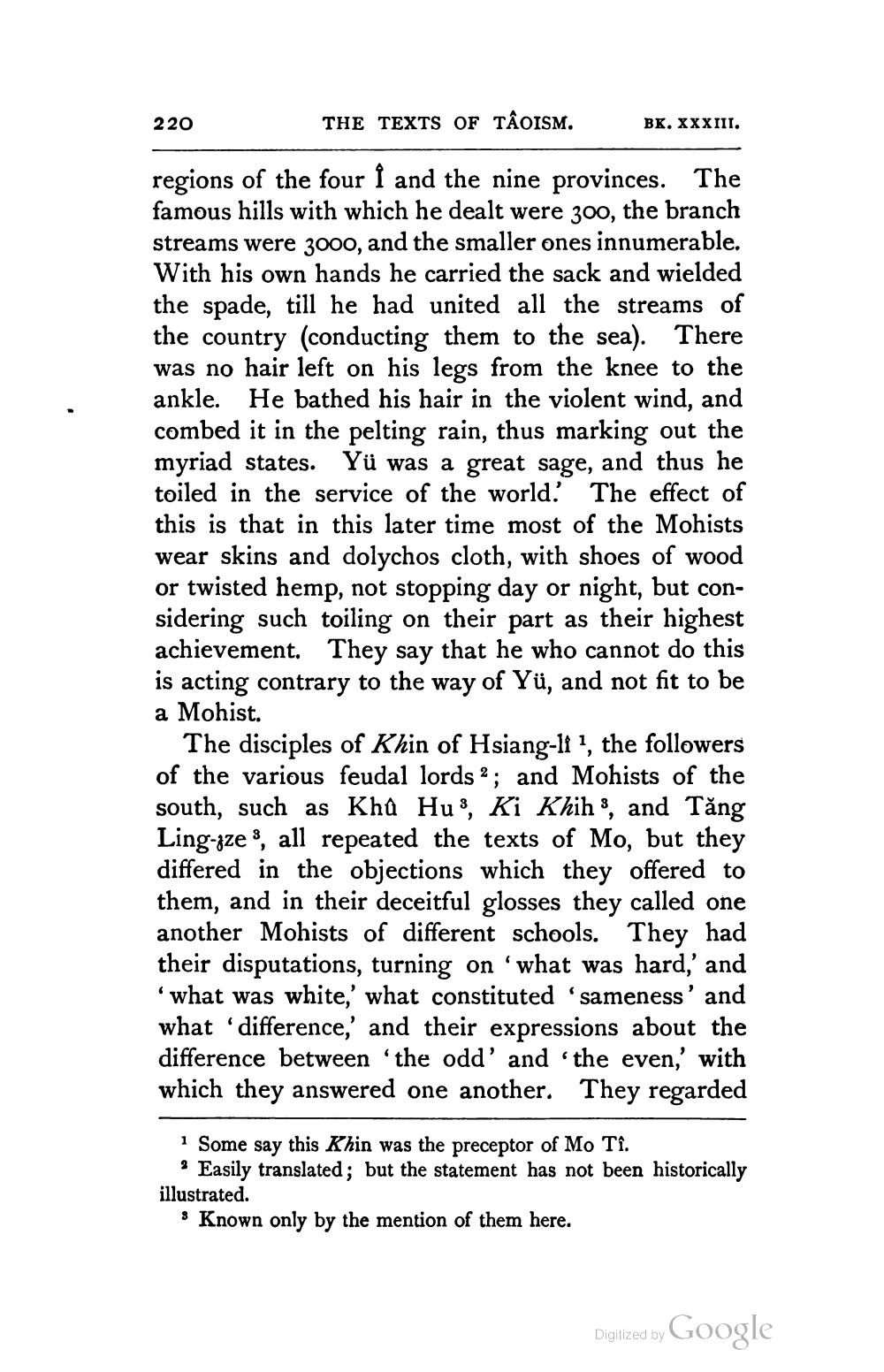________________
THE TEXTS OF TAOISM.
The
regions of the four Î and the nine provinces. famous hills with which he dealt were 300, the branch streams were 3000, and the smaller ones innumerable. With his own hands he carried the sack and wielded the spade, till he had united all the streams of the country (conducting them to the sea). There was no hair left on his legs from the knee to the ankle. He bathed his hair in the violent wind, and combed it in the pelting rain, thus marking out the myriad states. Yü was a great sage, and thus he toiled in the service of the world. The effect of this is that in this later time most of the Mohists wear skins and dolychos cloth, with shoes of wood or twisted hemp, not stopping day or night, but considering such toiling on their part as their highest achievement. They say that he who cannot do this is acting contrary to the way of Yü, and not fit to be a Mohist.
220
BK. XXXIII.
The disciples of Khin of Hsiang-li1, the followers of the various feudal lords 2; and Mohists of the south, such as Khû Hu3, Ki Khih3, and Tăng Ling-ze3, all repeated the texts of Mo, but they differed in the objections which they offered to them, and in their deceitful glosses they called one another Mohists of different schools. They had their disputations, turning on 'what was hard,' and 'what was white,' what constituted 'sameness' and what 'difference,' and their expressions about the difference between 'the odd' and 'the even,' with which they answered one another. They regarded
1 Some say this Khin was the preceptor of Mo Tî.
* Easily translated; but the statement has not been historically illustrated.
3 Known only by the mention of them here.
Digitized by Google




